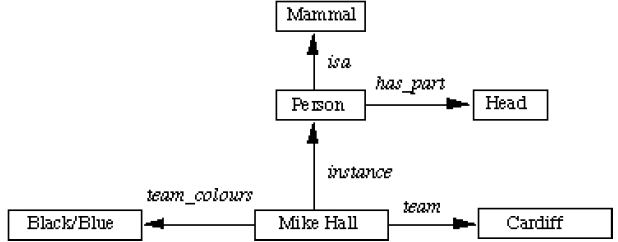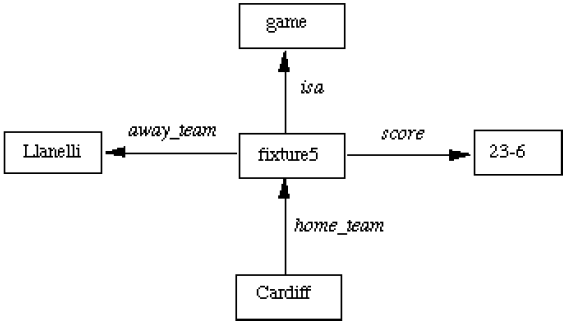Semantic Networks
Semantic Networks: A semantic network is often used as a form of knowledge representation. It is a directed graph consisting of vertices which represent concepts and edges which represent semantic relations between the concepts.
The following semantic relations are commonly represented in a semantic net.
- Meronymy (A is part of B)
- Holonymy (B has A as a part of itself)
- Hyponymy (or troponymy) (A is subordinate of B; A is kind of B)
- Hypernymy (A is superordinate of B)
- Synonymy (A denotes the same as B)
- Antonymy (A denotes the opposite of B)
Example: The physical attributes of a person can be represented as in the following figure using a semantic net

These values can also be represented in logic as: isa(person, mammal), instance(Mike-Hall, person) team(Mike-Hall, Cardiff)
We know that conventional predicates such as lecturer(dave) can be written as instance (dave, lecturer) Recall that isa and instance represent inheritance and are popular in many knowledge representation schemes. But we have a problem: How we can have more than 2 place predicates in semantic nets? E.g. score(Cardiff, Llanelli, 23-6)
Solution:
- Create new nodes to represent new objects either contained or alluded to in the knowledge, game and fixture in the current example.
- Relate information to nodes and fill up slots.

As a more complex example consider the sentence: John gave Mary the book. Here we have several aspects of an event.
